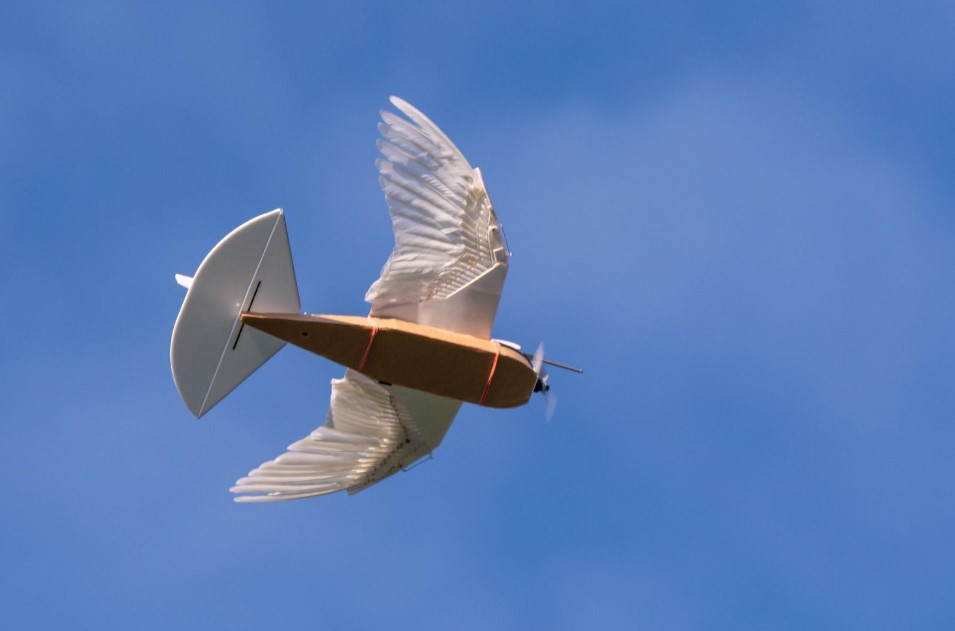
PigeonBot
Researchers at Stanford University have built a drone called PigeonBot, with wings coated in real pigeon feathers. And it flies so deftly, New Scientist reports, that it could change the way aircraft are built in the future.
“We let go of the idea that you have to control every degree of freedom and I think future aircraft will benefit from this finding,” David Lentink, lead author of a paper about the project published in the journal Science today, told New Scientist. “Future airplanes may not flap their wings, but I think they will change shape.
Sharp Turns
The robot’s artificial wings, covered in 40 pigeon feathers each, were constructed by connecting artificial “wrists” and “fingers” via synthetic elastic ligaments.
The researchers found that by changing the pitch of these artificial wrists and fingers, they could change the entire shape of the robot’s wings, allowing it to make sharp turns in mid-air like a real bird.
Directional Velcro
The team also discovered that tiny hooks can automatically lock the feathers together and stop them from spreading out too far apart — a mechanism that plays a critical role in the way the feathers move together.
These tiny structures could also inspire things like futuristic clasps on clothing or extra sticky bandages, NPR reports.
